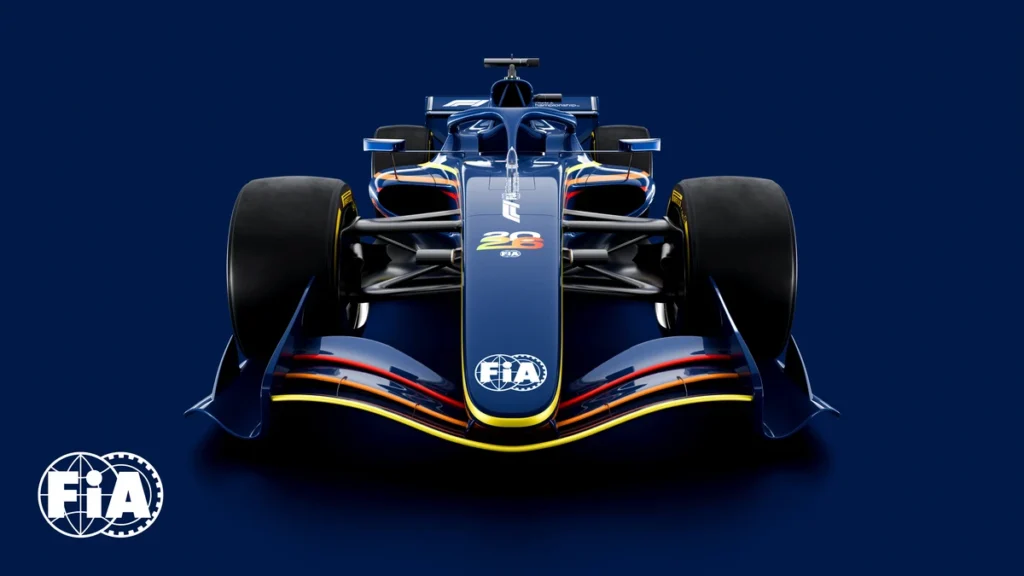All About F1 2026 Regulations: What to Expect and Why It Matters

F1 2026 Car. (Image source: FIA)
The upcoming 2026 F1 regulations have got a lot of conversations going after the FIA revealed the complete list of regulations last week. While a few teams have welcomed the new rules, bigwigs like Red Bull have flagged their concerns, stating the regulations are detrimental to the drivers as well as the sport in general. This article will give you a solid grasp of all the significant changes in the regulations for the car, whether are they good for the sport and most importantly, will be more exciting.

Why is Red Bull Not Happy With the 2026 F1 Regulations?
FIA sneakily announced the 2026 regulations last year, which largely went unnoticed. However, in his recent comments, Max Verstappen raised concerns along with team principal Christian Horner, sparking new debates.
In a press statement, Verstappen mentioned how the team with the most powerful engine would also be the fastest one on the track. Adding to it, he said that drivers will also have to downshift on straits to recharge the battery.
So what’s all the fuss about?
F1 2026 Engine Regulations Explained
New Fuel: The FIA’s Net Zero Carbon project is aimed at addressing the torrent of criticism that the sport faced for its carbon footprint. On the back of it, the 2026 cars will be using 100% carbon-free fuel.
More Electric: The new MGU-K unit in the 2026 cars will be three times more powerful than before. This is a step up from the 120 kW to a motor generator with 350 kW, bringing in more electric power.
No MGU-H: The current F1 cars also use the MGU-H (Motor Generator Unit – Heat) to recover lost energy, working in tandem with the battery and electric motors. Due to the complexity and cost, FIA has decided to make it easier for new engine manufacturers.
Less Fuel This Time: According to the current regulations, teams are allowed to use 100kg of fuel in their cars in a race. For the 2026 season, this will be reduced to 70kg. FIA claims that this would be achievable considering that the new engines will be more efficient while outputting the same amount of power.

Why is the New MGU-K Challenging?
We know that the new MGU-K is set to be three times more powerful than the current iteration. This means that the drivers will need to pay more attention to when and where they recharge and discharge the batteries. However, what makes things challenging is that the FIA has decided to retain the current battery capacity. In its current state, drivers can use up to 30 seconds of boost with this system. In 2026, this will be reduced to 10 seconds, posing a bigger challenge for the racers.
This is where Red Bull raised red flags with Verstappen pointing out how drivers might intentionally reduce their engine speed to get more boost on the straights. Of course, all of these are still guesses and concerns from the teams.
Read More: Adrian Newey Set to Part Ways From Red Bull – Details Here
Nerfing the Engine in 2026?
Another crucial detail in the 2026 regulations is the fuel flow through the engine. At the moment, the cars are allowed a maximum of 100 kg fuel that the engine can consume per hour. In 2026, the FIA directed the teams to an energy limit of 3000 MJ (from fuel) per hour. A little bit of match and this equates to outputs much lower to the current iterations. Still, the FIA claims that the engine will be equally powerful. So all we can do is wait and see what wizardry the engineers will pull off to make this possible.
Turbo Lag Making a Comeback?
The MGU-H unit is currently one of the most complex elements in an F1 car. It starts by converting it into electrical energy. This is then used by an electric motor to draw in more fresh air into the combustion chamber. We tried our best to explain it, but this might deserve another article.
Every team on the grid today, invests serious money and time into developing these units considering their benefit of providing instant power to the engine and terminating any turbo lag. However, 2026 will see the debut of two new engine manufacturers – Audi and Honda. The elimination of the MGU-H unit is primarily aimed at reducing complexities for them. This leads us to the question – will turbo lag be a thing again?
In the limits of our knowledge, we think that turbo lag will be more present than today. But not enough to send ripples in development, thanks to the powerful electric motors. The enormous instant energy that an electric motor can generate can be seen as a dampener for this issue.

Lighter, Shorter and Narrower Cars
The 2026 F1 regulations are set to make the cars lighter, shorter and narrower than before. The cars will weigh 30 kg less than now, bringing the current minimum weight to 768 kg. And in terms of dimensions, the cars will have a 200mm shorter wheelbase, and 100mm narrower.
Read More: Lewis Hamilton Ferrari Switch Explained: Unpacking the Impact on F1
But what comes as a shocker is the farewell to active aerodynamics. According to the 2026 F1 regulations, there will be no DRS, which will be replaced by a movable rear wing which will open automatically on straights to reduce drag when needed. In the same breath, another interesting element would be the movable front wing. This will work in the same way as the DRS to suit the energy demands of the new power units.
There is an all-new Manual Override Mode in the 2026 cars which will allow the driver to deploy more electric power while slip-streaming another car. Not just that, FIA has also made sure that the car is safer than ever with stronger structures for the cars.




1 thought on “All About F1 2026 Regulations: What to Expect and Why It Matters”